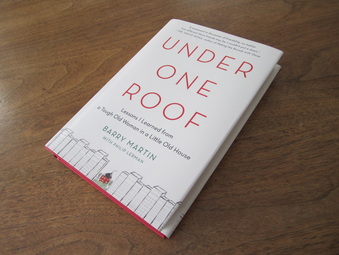When thinking about what I was going to do next, my first thought was to go get another job, but before I even left the office that afternoon I really decided I could do everything my bosses could do and the only thing I was missing was clients! It was a pretty easy decision to go on my own and never look back.
Being self employed to me meant I would never be laid off again. My fate would be in my hands, not in the hands of someone else. My ability, my commitment, and my personal relationship with future clients would determine if I sink or swim. I have managed to tread water for 27 years.
Do you have to be super talented to be successful, no. Being a better business man is more important than being a great architect, if you consider successful as staying in business.
You have to be disciplined, and more importantly you have to be self motivating. I like what I do to a fault. I have never had a time when I did not wanted to come to work. My enjoyment of my job has been detrimental to the profitability of my business for I have looked far more often through my passion rather than my wallet. I am not saying I would take advantage of people to make a profit, but I have done work for far less of a fee than I should have. I am the only one to blame, but I have made a good living. Is there a potential to make a great deal of money in architecture, sure, but it is like any other business and if that is your goal and you market and price accordingly you probably can make a lot of money. I just don't think for many of us money was the motivating factor for getting into the profession.
I do not advertise and all my work is by referrals. Treat people fairly, be honest and give good service and you stand a good chance of surviving. You have to remember there are all types of clients and niches to be filled. I cater to contractors and developers, so for some more detailed oriented architects that type of work may not be satisfying. There are those who cater to the high end residential and for some that may be to demanding.
Your business is what YOU make it. If you think you should run your business one way and you don't get clients, you better change and adapt or go figure out where that clientele resides and move there.
Some would say dedication is required for self employment, but if you are disciplined and self motivated, dedication just follows along. One characteristic I did fail to mention is confident. That is not to be confused with arrogant and I think a lot of people can't distinguish between the two.
Who should become self employed? I think it is something you just know. If you spend your time trying to figure out how to do things more than you spend time worrying about if you should do things, you probably are one of the few that should make the leap.
Why do I laughing refer to myself as "Self Unemployed"? It didn't occur to me until after I left my last office. While working for someone you assume as long as you do your job well you will remain secure at your position, you will stay employed. Once I started working for myself I realized I had no guarantee that any client would ever walk through my door to bring me work. The false security of working for someone else made me realize we are all just a moment away of being unemployed. So I concluded self employment was just client funded unemployment in a way, right?


 RSS Feed
RSS Feed